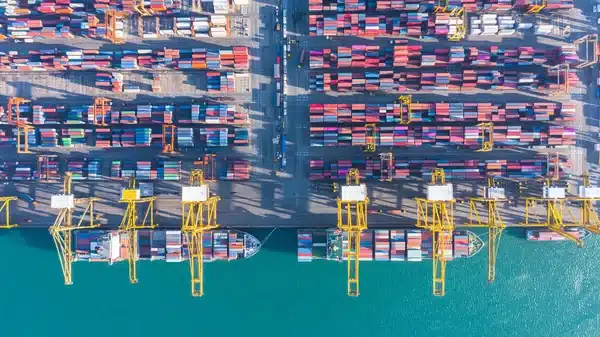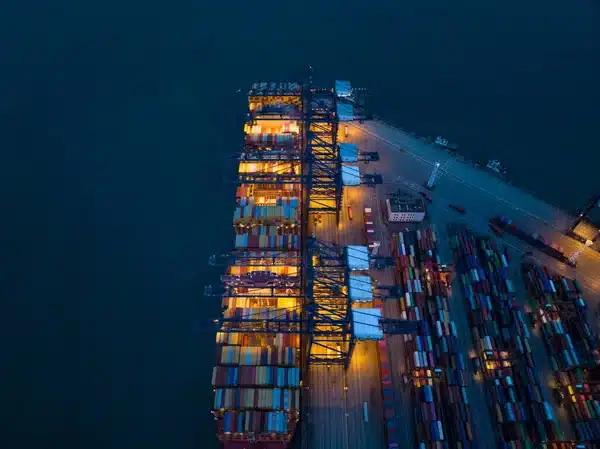Yantian Port, located in Shenzhen, China, stands as one of the most significant container terminals in the world. Renowned for its advanced infrastructure, high efficiency, and strategic location, the port is a cornerstone of China’s international trade network. Serving as a gateway for exports to North America, Europe, and other regions, Yantian Port plays a vital role in connecting China to the global market.
This comprehensive guide delves into the details of Yantian Port, from its history and development to its facilities, shipping routes, and contributions to global trade. Whether you’re a logistics professional, business owner, or maritime enthusiast, this article provides in-depth insights into one of the world’s busiest ports.

Overview of Yantian Port
Location and Strategic Importance
Situated in the eastern part of Shenzhen, Guangdong Province, Yantian Port enjoys a prime location near the South China Sea. Its proximity to major manufacturing hubs in Guangdong makes it an essential node in the global supply chain.
Coordinates: 22.56°N, 114.28°E
Accessibility: Well-connected to highways, railways, and airports, ensuring seamless transportation.
Strategic Role: Serves as a primary export hub for electronics, textiles, machinery, and other goods manufactured in southern China.
Historical Background
Establishment: Yantian Port began operations in 1994 as part of Shenzhen’s rapid economic development.
Expansion: Over the years, the port has undergone multiple expansions to accommodate increasing trade volumes, with significant upgrades in 2007 and 2018.
Global Recognition: Recognized as a key player in international shipping, Yantian Port has consistently ranked among the top ports worldwide in terms of container throughput.

Facilities and Infrastructure
Container Terminals
Yantian Port boasts state-of-the-art container terminals equipped with cutting-edge technology to handle large volumes of cargo efficiently.
Berths: 18 deep-water berths capable of accommodating the world’s largest container ships.
Handling Capacity: Over 15 million TEUs (Twenty-Foot Equivalent Units) annually.
Cranes: Advanced quay cranes and gantry cranes for fast and efficient loading and unloading.
Storage Facilities
Container Yards: Extensive container storage areas with modern tracking systems.
Refrigerated Storage: Facilities for perishable goods, ensuring temperature-controlled environments.
Hazardous Goods Storage: Secure areas designed to handle and store hazardous materials safely.
Connectivity
Yantian Port is seamlessly connected to regional and international transportation networks:
Rail Connectivity: Direct rail links to inland cities, enabling efficient cargo movement.
Road Network: Well-developed highway connections to Guangdong’s industrial zones and beyond.
Sea Routes: Direct shipping routes to major ports in North America, Europe, and Asia.
Operations and Technology
Advanced Automation
Yantian Port integrates cutting-edge automation and digital technology to streamline operations:
Automated Terminals: High levels of automation in cargo handling reduce turnaround times.
Smart Port Solutions: Use of AI, IoT, and big data for predictive analytics and operational efficiency.
Paperless Transactions: Implementation of e-documents and blockchain for secure and transparent processes.
Environmental Initiatives
Committed to sustainable practices, Yantian Port employs eco-friendly measures:
Green Cranes: Electric and hybrid cranes to reduce carbon emissions.
Energy Efficiency: LED lighting and energy-efficient equipment throughout the port.
Waste Management: Comprehensive waste disposal and recycling systems.
Key Shipping Routes
Yantian Port serves as a hub for numerous global shipping routes, connecting China to key markets worldwide.
1. Major Routes
- North America: Direct services to major ports such as Los Angeles, Long Beach, and Vancouver.
- Europe: Connections to Rotterdam, Hamburg, and Antwerp.
- Asia: Regional trade routes to Singapore, Tokyo, and Bangkok.
- Middle East: Links to Jebel Ali, Dubai, and other strategic ports in the region.
2. Transshipment Services
The port acts as a transshipment hub for cargo moving between Asia, Africa, and South America.
Role in Global Trade
1. Export Powerhouse
Yantian Port handles a significant portion of China’s exports, including:
- Electronics: Smartphones, laptops, and other consumer electronics.
- Textiles: Clothing and fabrics for global fashion markets.
- Machinery: Industrial equipment and manufacturing tools.
2. Economic Impact
- Revenue Generation: Contributes substantially to Shenzhen’s GDP and China’s overall economy.
- Employment: Provides thousands of jobs, from dock workers to logistics professionals.

Yantian Port in Shenzhen, China, is a critical gateway for global trade, offering advanced facilities, efficient operations, and strategic connectivity. As one of the world’s busiest container terminals, it plays an indispensable role in linking China to international markets. By leveraging its capabilities and working with experienced logistics partners like Tonlexing, businesses can navigate the complexities of international shipping with confidence and ease.
Whether you’re an importer, exporter, or supply chain manager, understanding Yantian Port’s operations and advantages can help you make informed decisions and optimize your logistics strategy. Reach out to Tonlexing for expert guidance and comprehensive shipping solutions.


